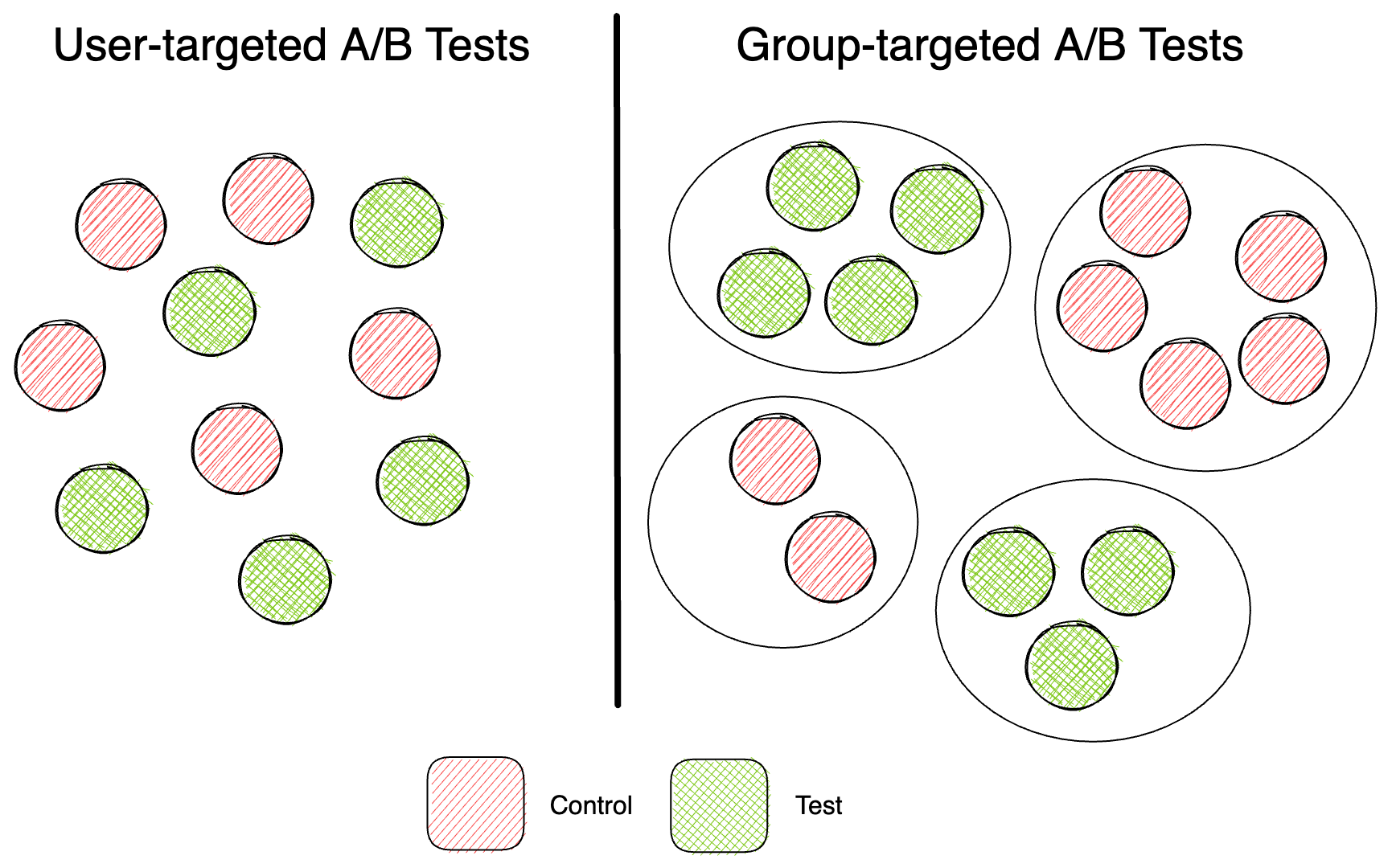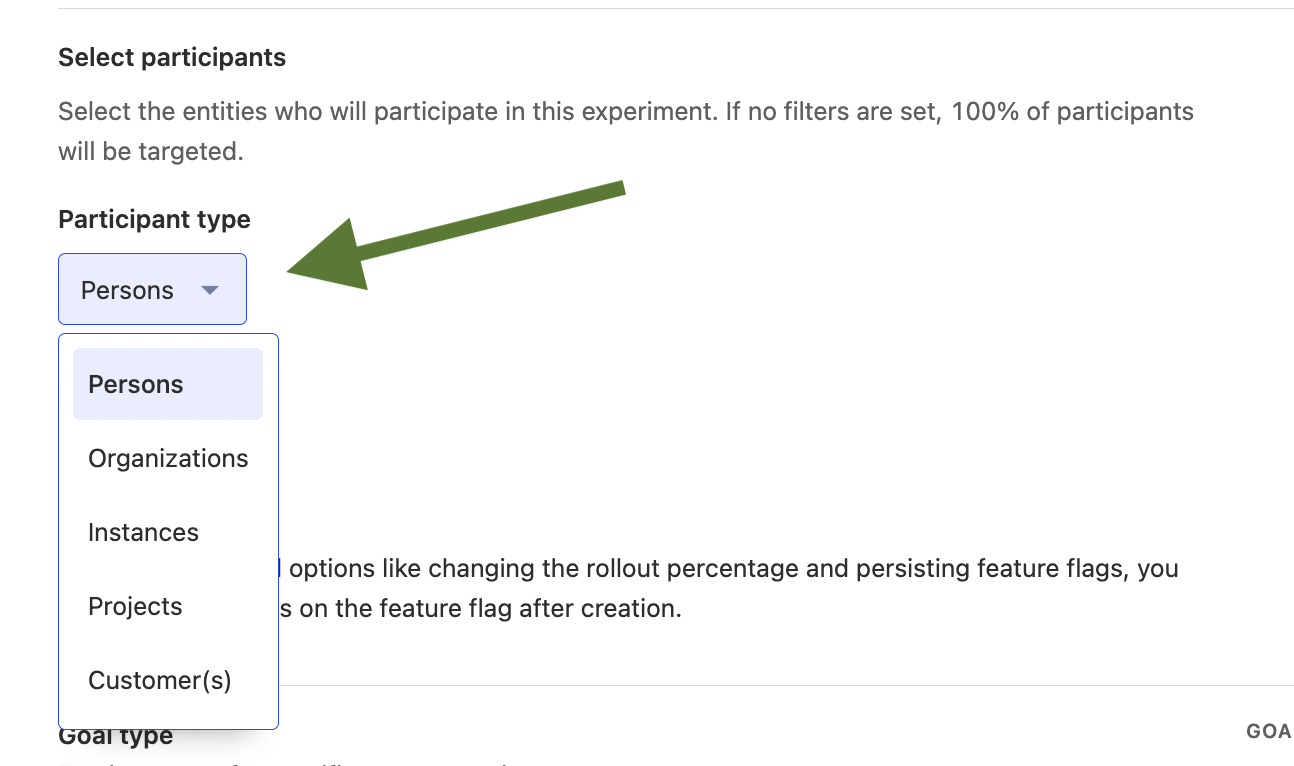
When and how to run group-targeted A/B tests
Contents
A/B tests are a powerful tool for measuring how product changes impact user behavior. However, sometimes changing how one user interacts with your product will affect how others use it too. For example, a change in the Uber app for drivers likely affects riders' experience too. In these scenarios, group-targeted experiments enable us to measure the impact of changes beyond an individual user and across a group of users.
What are group-targeted experiments?
In group-targeted experiments, the test applies to an entire group rather than individual users. This means that everyone within a specific group will experience the same conditions, for example, the control or test variant. This enables you to measure the impact of any changes on the group as a whole, rather than on individual users within the group.
Groups can be companies, geographic locations, or any other set of users with common characteristics.

When to run group-targeted experiments
Run group-targeted experiments when:
You want to measure the impact of a change on an entire group of users.
The change in how an individual user uses your product significantly impacts the behavior of other users.
This is usually seen in the following types of products:
- B2B SaaS apps, in order to test how a change will affect how an entire company uses your product.
Example: Suppose Asana wants to test a new AI feature that automatically assigns tasks based on their urgency and importance. By conducting a group-targeted experiment, they can measure the impact on project completion rates across the entire company.
- Products with network effects, since a change for one user will likely affect how other users interact with the product.
Example: Suppose Slack wants to improve the usage of a new video calling feature. Improving the feature's discoverability for a single user will increase their own usage with it, but since they use it with their coworkers, their coworkers will also discover it.
Risks in group-targeted experiments
There are three key risks to take into consideration when running a group-targeted experiment:
1. Less statistical power
Since you treat a group of users as a single data point in group-targeted experiments, you have less statistical power – e.g. Slack has 20 million users, but only 600,000 companies using it.
In practice, this means that you'll usually have to run group-targeted experiments longer than you would user-targeted experiments.
2. Higher randomization risk
Randomization risk can occur when groups are not properly randomized when assigned to the control or test variants. Since you have fewer data points in group-targeted experiments, the risk is higher that this will occur, and it can distort results.
For example, say a B2B SaaS company wants to see if a new pricing plan helps retain customers. They split companies into two groups: one with the new plan and one with the old plan. However, the randomization process assigns more small companies to the new plan and more large companies to the old plan. This may skew the results because company size could be a factor in determining customer retention rather than the pricing plan itself.
3. Fewer user-level insights
Since group-targeted experiments provide insights on an aggregate level, they may not show insights on a user level.
For example, say a B2B SaaS tool wants users to invite coworkers to use the app. They add a big "Invite Coworker" button and test it in a company-targeted experiment.
The results show an increase in invites sent, but it's hard to know how individual users used the button. For example, what are the roles or skill sets of team members who are most likely to interact with the button and send invites?
How to reduce risk in group-target experiments
To reduce these risks, consider running a small user-level experiment before running a larger group-level one. This can help you in the following ways:
1. Quickly eliminate changes that have no impact
A change that doesn't impact behavior at a user-level won't, in all likelihood, impact behavior at a group-level either. Running a user-level test first allows you to eliminate ineffective changes and, due to their greater statistical power, you'll get results faster.
2. Gain user-level insights and identify randomization risks
Running a user-targeted experiment first gives you insight into how individual users interact with your change and what properties they possess. This will then give you an understanding of what results you can expect from a group-targeted experiment.
This can also help you identify randomization risks. For example, let's say a B2B SaaS app runs a user-targeted experiment, and notices that users in large companies are more likely to interact with their new feature. In this case, when they run a group-targeted experiment, they can ensure to filter out small and medium-sized companies in their experiment in order to obtain more accurate results.
How to set up group-targeted experiments in PostHog
First, ensure you have set up a group in PostHog. Next, go to your PostHog dashboard and create a new experiment.
In the New Experiment screen, select the Participant type. By default, it will show Persons (i.e. a user-targeted experiment). Click on the drop-down and select your new group.

Next, set your primary and secondary metrics as usual.
A handy feature especially useful for group-targeted experiments is the Minimum Acceptable Improvement calculator at the bottom of the page. Since group-targeted experiments have lower statistical power, this will recommend a time for how long you should run your experiment in order to see results.

Summary
To conclude, there are three key points to remember when running experiments on groups:
They're useful for understanding if/how changes in individual usage impact related groups
Group-targeted experiments have less statistical power than user-level tests. This means they take longer to run and fewer user-level insights.
Running smaller, user-level tests first is a good way to reduce the unique risks of group-targeted experiments.
Read our A/B testing product manual and what we've learned about running A/B tests at PostHog for more A/B testing tips.

Subscribe to our newsletter
Product for Engineers
Read by 100,000+ founders and builders
We'll share your email with Substack
PostHog is an all-in-one developer platform for building successful products. We provide product analytics, web analytics, session replay, error tracking, feature flags, experiments, surveys, LLM analytics, data warehouse, CDP, and an AI product assistant to help debug your code, ship features faster, and keep all your usage and customer data in one stack.









